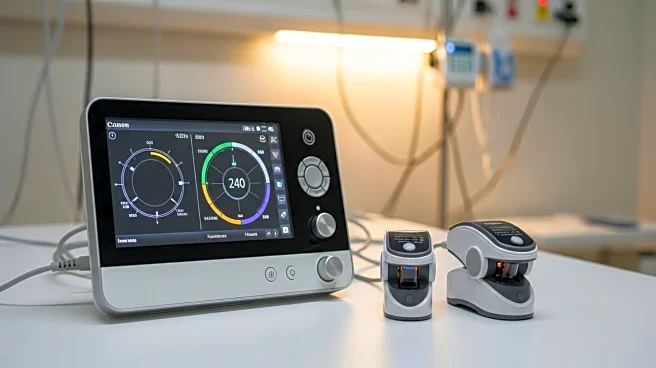What's Happening?
Researchers at Aalto University and the University of Bayreuth have developed a groundbreaking self-healing hydrogel inspired by human skin. This innovative material can repair itself from cuts and scratches, achieving up to 90% repair in four hours and full restoration within 24 hours. The hydrogel's composition includes ultra-thin clay nanosheets and dense polymer networks, providing both stiffness and flexibility. Unlike traditional hydrogels, this new formulation enhances polymer entanglements, allowing automatic bond reforming after damage. The gel's ability to adhere to various substrates opens up potential applications in biomedical implants and soft robotics, offering significant cost reductions in sectors where material failure is costly.
Why It's Important?
The development of self-healing hydrogels marks a significant advancement in materials science, with profound implications for healthcare and other industries. In healthcare, these hydrogels could transform wound care and serve as injectable implants for brain diseases, promoting tissue regeneration through minimally invasive procedures. The material's biocompatibility and rapid healing mimic natural skin processes, potentially revolutionizing treatments for chronic wounds. Beyond healthcare, the self-healing properties of these gels could benefit sectors like automotive and electronics, where self-repairing coatings could reduce repair times and costs. The growing market for self-healing materials, projected to reach billions by 2035, underscores the potential impact of this innovation.
Beyond the Headlines
The introduction of self-healing hydrogels raises ethical and regulatory considerations, particularly regarding accessibility and environmental impact. As these materials become more integrated into everyday applications, regulatory bodies must ensure their safety, especially in medical uses. The potential for these gels to replace traditional joint replacements and other medical devices highlights the need for careful oversight. Additionally, the trend towards sustainable materials, such as seaweed-based hydrogels, reflects a broader movement towards environmentally friendly innovations. As research continues, these materials could become commonplace in wearable tech and advanced prosthetics, promising a more resilient and sustainable future.











